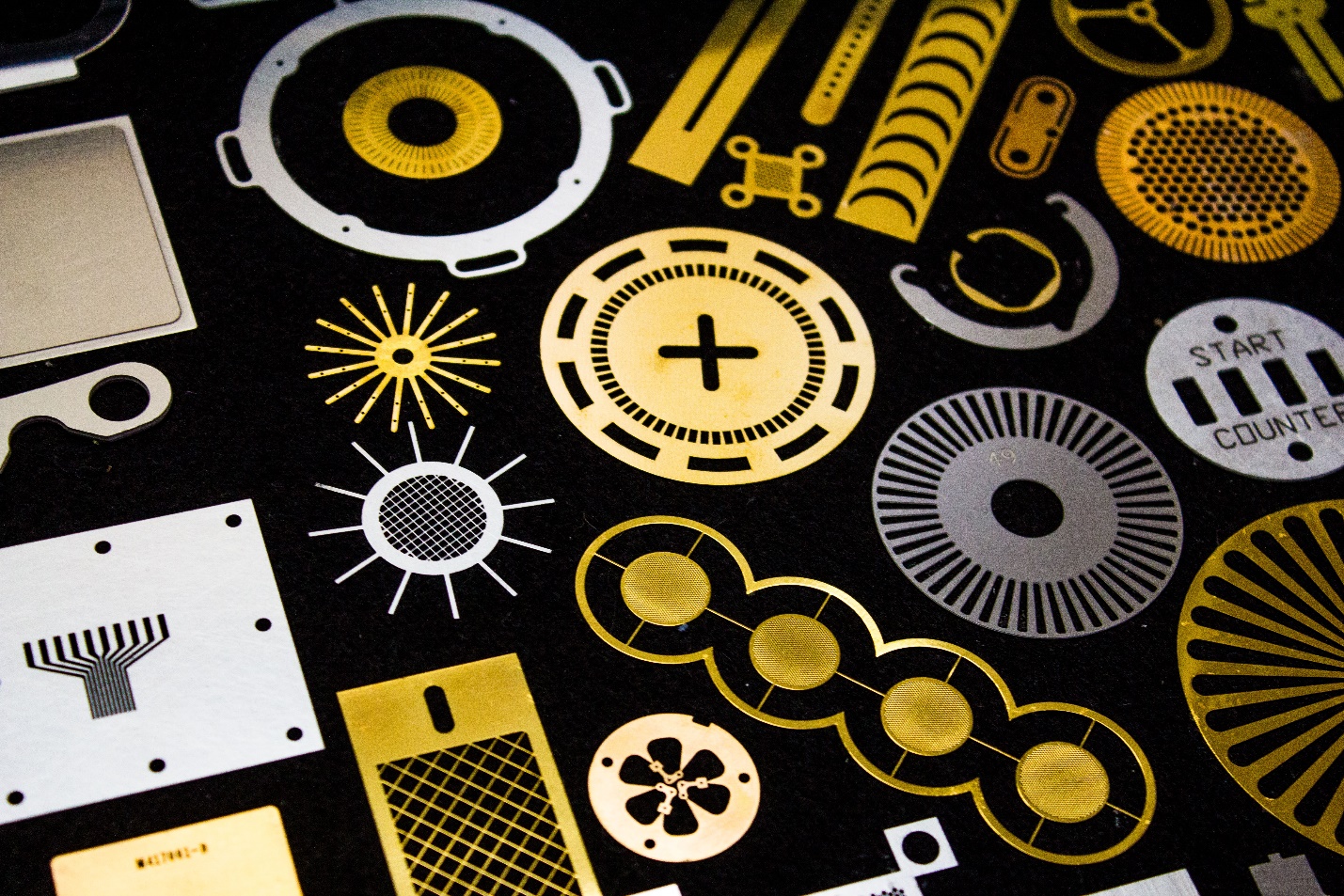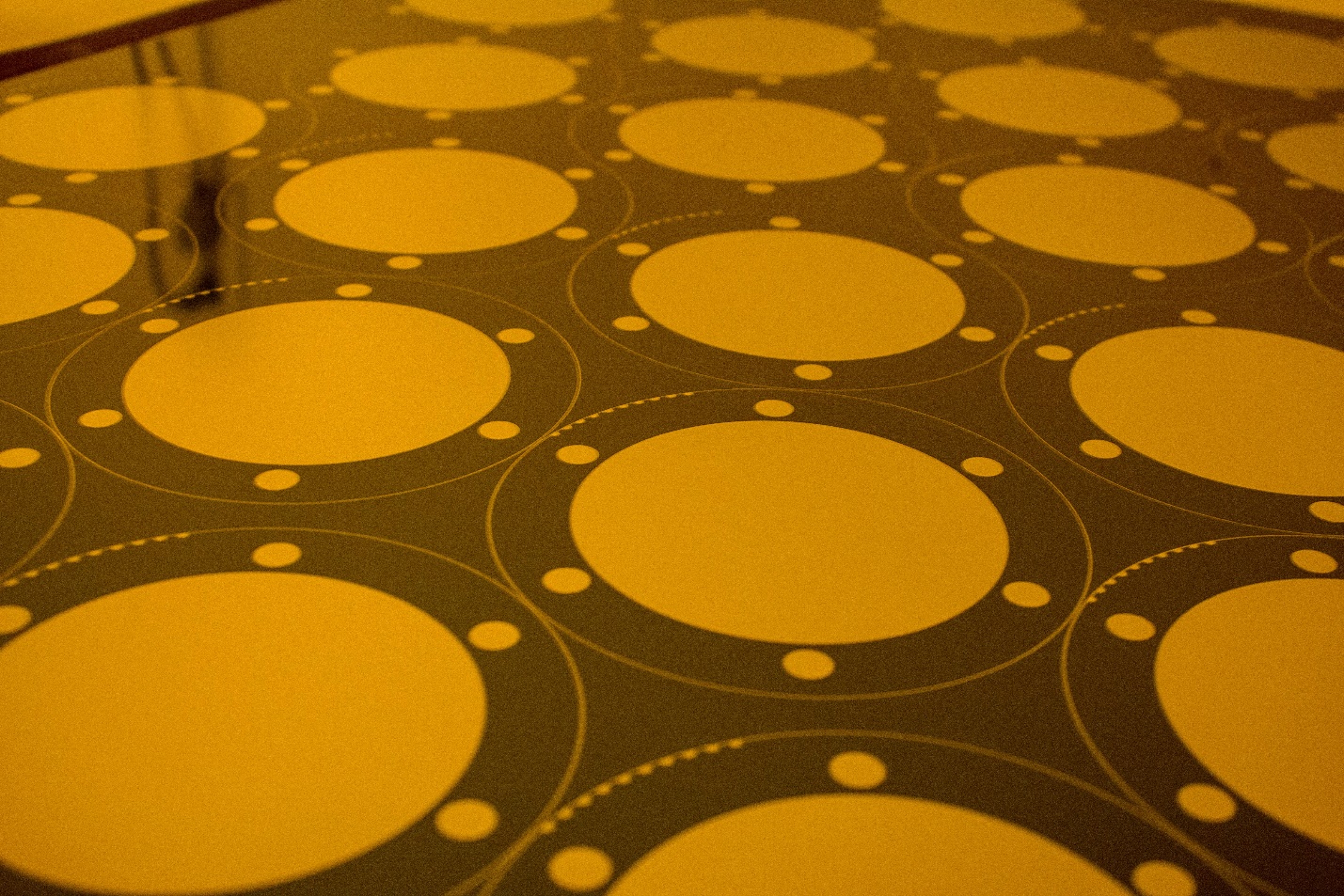Photochemical Etching | Medical Industry
The medical field often permits little room for error. In many cases, the difference between success and failure, sometimes even life and death, can be calculated in extremely small units of measurements—a surgical implement that creates millimeter-long cuts or an implant with components that must operate with a high degree of precision to sustain life.
Therefore, there is a strong demand for manufacturing processes that can produce medical tools and devices at tight tolerances. To address this need, the medical sector has increasingly turned to photochemical etching—alternatively known as photo etching or chemical etching—as a manufacturing process that is capable of creating these kinds of parts while unfailingly reproducing their specifications accurately. Photo etched parts are practically ubiquitous in the medical field.
Although photochemical etching is not the only process that can shape metals, it has been found to be best suited for crafting a broad range of medical tools and equipment. In this article, we’ll explore the reasons why photo etching has attained widespread recognition as a highly effective process for shaping the types of materials often found in medical equipment.

Types of Stainless Steel
The most common type of material used in the creation of medical tools and devices is austenitic (non-magnetic) stainless steel, specifically Type 304, which is itself the most frequently seen variety of this metal. Type 304 is alternatively known as 18/8 stainless steel, which refers to its percentage of chromium (18%) and nickel (8%) content. Type 304 stainless steel has also been successfully employed in the formation of many household appliances and accessories, as well as in food processing plants.
The next most common type of austenitic stainless steel is Type 316, which is often seen in marine and construction applications in addition to the medical field. Type 316 is very similar to 304—the main difference is 316’s markedly higher amount of molybdenum—but it tends to be more expensive and has a few key differences in its practical capabilities. For example, 316 enjoys superior chloride and corrosion resistance.
Type 316L metal is characterized by a lower amount of carbon, which makes it preferable for manufacturing processes that involve welding.
Stainless Steel in the Medical Field
Stainless steel has numerous attractive characteristics that make it ideal for medical tools and accessories:
- Resistance to corrosion – The chromium in stainless steel promotes the formation of a durable oxide layer that provides this metal with its characteristic corrosion resistance. Due to this characteristic, medical implants made from stainless steel will not cause dangerous infections under ordinary circumstances.
- Resistance to heat and stress – Stainless steel maintains high heat resistance, fatigue strength, and creep resistance when exposed to high temperatures and other stresses.
- Non-magnetic – Although stainless steel is not totally non-magnetic in the strictest sense, its magnetic permeability is extremely low.
- Easy to clean – It goes without saying that keeping medical instruments sterile is vastly important. Stainless steel is extremely smooth and can be exposed to a wide variety of cleaning agents without harm.
- Flexibility – Stainless steel can be shaped into a broad spectrum of formations and configurations, making it usable in many medical applications.
- Retains shape – Once it has been properly formed, a stainless-steel implement (especially Type 316) will remain hard and, where applicable, sharp.
- Recyclability – Stainless steel is 100% recyclable, which dramatically lowers the environmental impact involved in the production of medical instruments made from this metal.
- Safe – Although a small minority of individuals are sensitive to chromium and/or nickel, stainless steel generally causes no adverse reactions when used in implants.
Stainless steel offers an enormous range of possibilities as a material well suited to the exacting demands of the medical industry. However, the fabrication process used to form medical tools and devices must also adhere to exacting standards.
Although the manufacturing sector has access to multiple etching processes, such as laser cutting, stamping, and electroforming, many of these are inadequate for the purpose of creating certain medical tools. Photo etching lacks many of the drawbacks associated with these methods.
The Benefits of Photo Etching
Photo etching is a subtractive manufacturing process that uses special coatings to shield specific areas of a material while a chemical agent removes the exposed portions. The result is a precisely rendered pattern or design.
How is this different from other etching processes? The photo etching process carries several key advantages and avoids certain disadvantages associated with alternative methods:
- No burrs or deformations – Photochemical etching will not create burrs as laser cutting and water jetting tend to do. It also places no potentially damaging stress on the material.
- Low tooling investment – Photo etching relies on CAD rather than expensive hard tools that can significantly reduce your manufacturing costs.
- Quick production – Photo etching uses chemicals to treat all areas of the material simultaneously. This makes it faster than laser and wire cutting, which can work on only one spot at a time.
These and other advantages have made photo etching the best option when it comes to fabricating stainless steel medical tools, devices, and equipment.
Types of Photo-Etched Medical Accessories
There are a vast number of medical tools and devices that have been fabricated with the help of photochemical etching processes. What follows is a partial listing of these accessories.
- Surgical staples – Stainless-steel staples, most typically used on the scalp and trunk to close wounds, can be put into place much faster than standard sutures.
- Pacemakers – These devices typically come with EMI/RFI shielding that has gone through the photo etching process.
- Laboratory filters – Chemical etching is excellent at creating filters according to exact specifications.
- High Transmission Cellular (HTC) grids – These grids absorb radiation generated by x-ray equipment.
- Reticles – These are extremely fine patterns, such as crosshairs, etched into the eyepiece of a microscope or similar sighting device.
Other parts and components created by photo etching metals include needles, hearing aid components, ID tags, anode and cathode grids, stents, and orthopedic bone implants.
Contact United Western Enterprises, Inc. for Expert Custom Photo Etching Services

Since 1969, United Western Enterprises has produced photo-etched parts and accessories for the aerospace, medical, electronics, and automotive sectors. If you’d like to learn more about our photochemical etching technology, call our office at (800) 964-6461 or contact us through our web form. We are an AS 9100D / ISO 9001:2015 Certified Company.
